Under the umbrella of the European project STEM4youth for engaging teenagers with citizen science, I recently had the opportunity of collaborating for a series of case studies with the OpenSystems group leaded by Josep Perelló at the University of Barcelona. We organised a series of co-design sessions of experiments about human behaviour with three diverse groups of students from different secondary schools (totalling more than 100 participants as “amateur researchers”).
The basic premise of the process was to start in the same way in all cases: rather than only involving students in the data gathering process (which is the usual approach in citizen science), to work with them in the earlier phase of defining together the goals, issues and methods related to the experiment, following a “co-created” approach.
Here are some images from the experiments taking place after the co-design phase described in this post (and after a co-production process leaded by Isabelle Bonhoure and rest of the OpenSystems team), which just took place in Viladecans (with students from Sant Gabriel School) and in Badalona (with students from Enric Borràs secondary school -BTW lots of other photos here), and with a third one coming soon in Barcelona (with Jesuïtes de Casp).
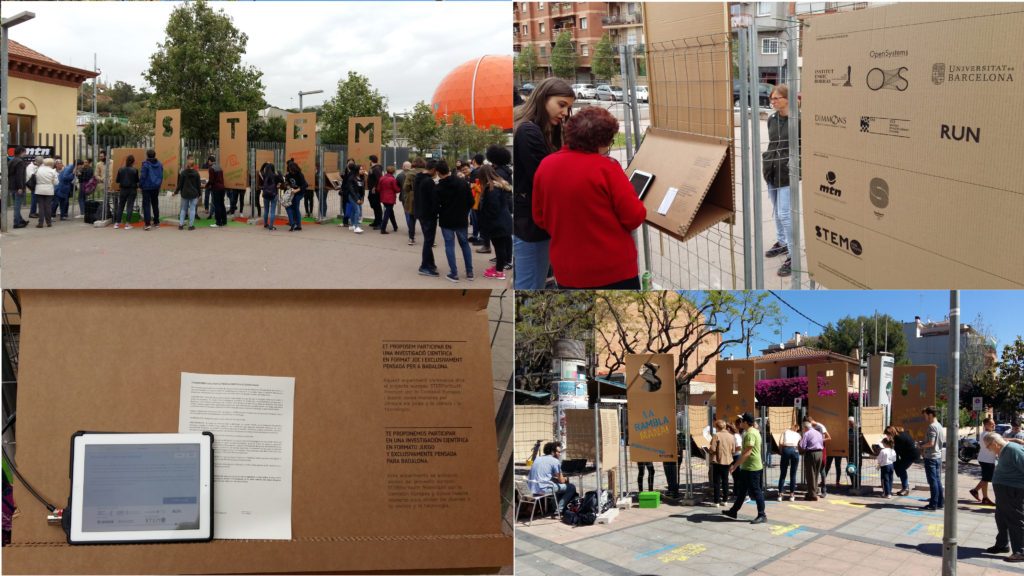
This co-created approach to citizen science represented a great opportunity for me to apply some of the expertise gathered as co-design facilitator some years ago with Platoniq (which constitutes one of the areas of practice I’m studying right now with my PhD project at Dimmons). Specially for testing a first version of a “Collaborative Research Toolkit” following a series of steps for each session, where as a facilitator (with help as co-facilitators and constant feedback from the OpenSystems team) I tried to guide participants through all the co-design process.
This way, via four specific workshops with each of the groups, the dynamics moved from (1) shared issues of concern, then (2) derived research questions, followed by (3) prototyping the experiment process in a visual way, and finally (4) eliciting and reflecting the type of tasks and logistics associated to it. Here I give a broad overview of the process, while in parallel finishing a paper about the experience as a case study:
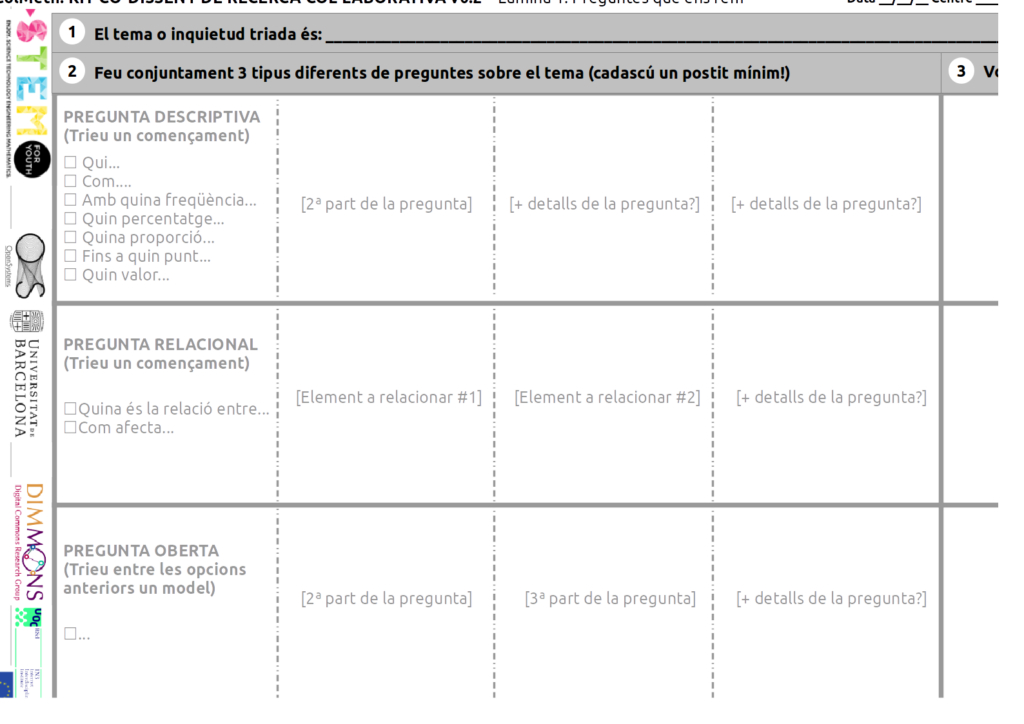
At each of the four stages of the co-design process for the experiments there was a “divergence” and “convergence” phase for generating ideas collaboratively and then selecting together the best options. During all the process, co-facilitators served as connectors of concepts and active listeners, trying to operate in the subtle link existing between action research and collaborative design. In this case, for starting with the students choosing whatever concern or problem they wanted to address with an experiment about human behaviour. This formed the first phase of the process, where there was a session when they could brainstorm about the types of issues at the local level where an experiment about human behaviour could help to generate evidence, taking into account indicators like “feasibility”, “social impact” or “motivation”, which were reflected on specific thermometers on a wall.
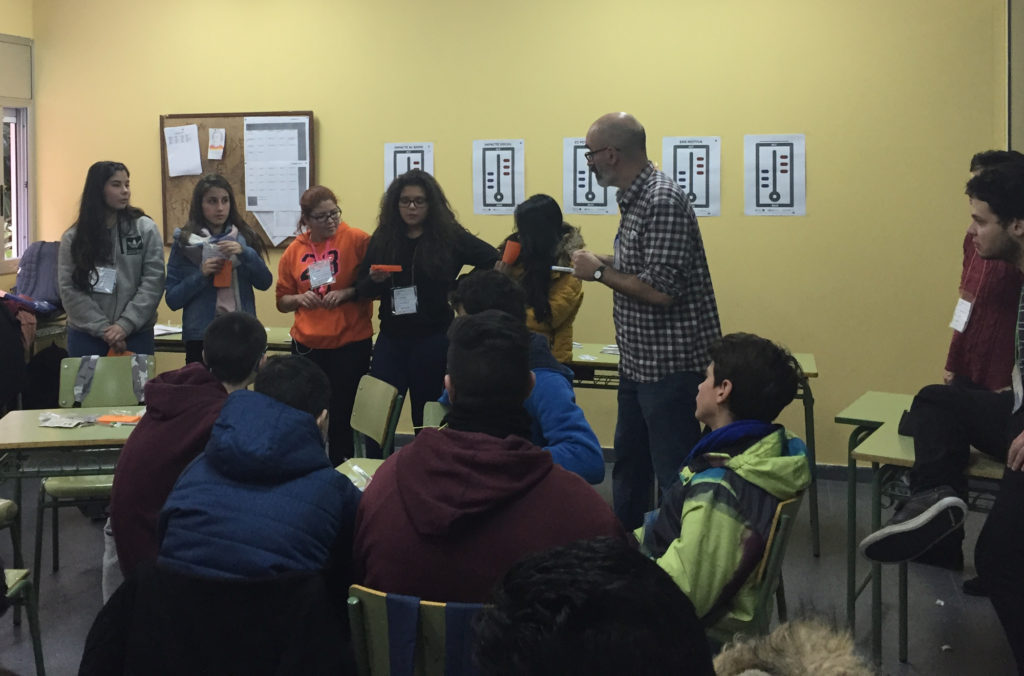
This first version of the toolkit (soon to be released under a copyleft license) went under a series of preliminary versions and discussions, trying to find a balance between usability and rigour, in order to create a co-design set of tools useful for a research purpose. In those preliminary discussions, before the sessions with students (although refining the toolkit took place later on in other different key moments of the process, adapting to the evolution of each group and session goals), the main aim was to reach a real level of deep collaboration and mutual influence between research “experts” and research “amateurs”, and not only some sort of excuse for light levels of participation.
For the second stage of co-creating specific research questions, each sub-group used a canvas where to place postits, in order to cooperatively articulate at least three sentences following the same structure. Starting with predefined syntagms (“What if…”; “What is the relation between…”; “How…”), these empty structures contained in a modular way different options for a quantitative research question.
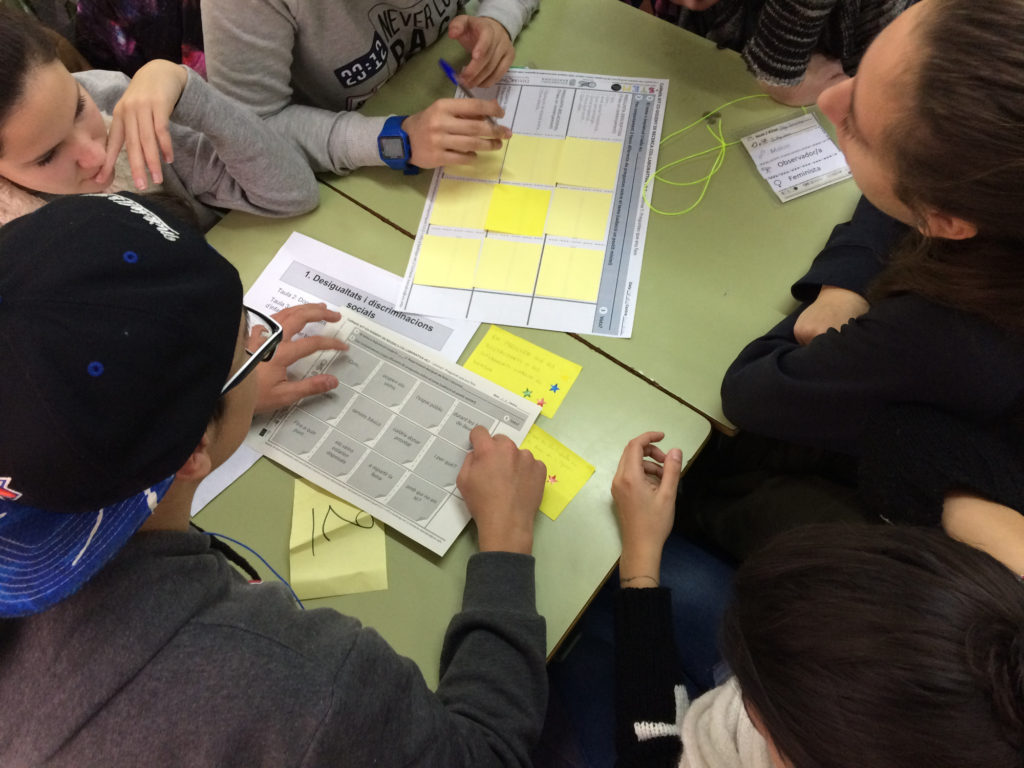
The third phase of co-design of citizen science experiments allowed to connect the selected research questions from each group to a more explorative and creative moment, prototyping the sequence of the experiment itself. This was done considering the “big picture” of the research project as a flow of actions over a timeline. For this, participants selected a series of icons from a large set of images that reflected key aspects around a possible experiment: research methods (surveys, observation, simulations, etc); experiment logistics (experiment protocols, dissemination, space needs, etc); previously mentioned key concepts or variables (trust, value, solidarity, among others); key people or participants (representing options of age, gender, profession, etc) and additional elements to visualize (depending on the theme and issues for the experiment, ranging from public space icons to other social or context related ones). These dense diagrams enabled once more to activate discussions and conversations about feasibility and motivation, in order to select one co-design for each of the three schools, among 4 or 5 “finalist” prototypes after the overall refinement.
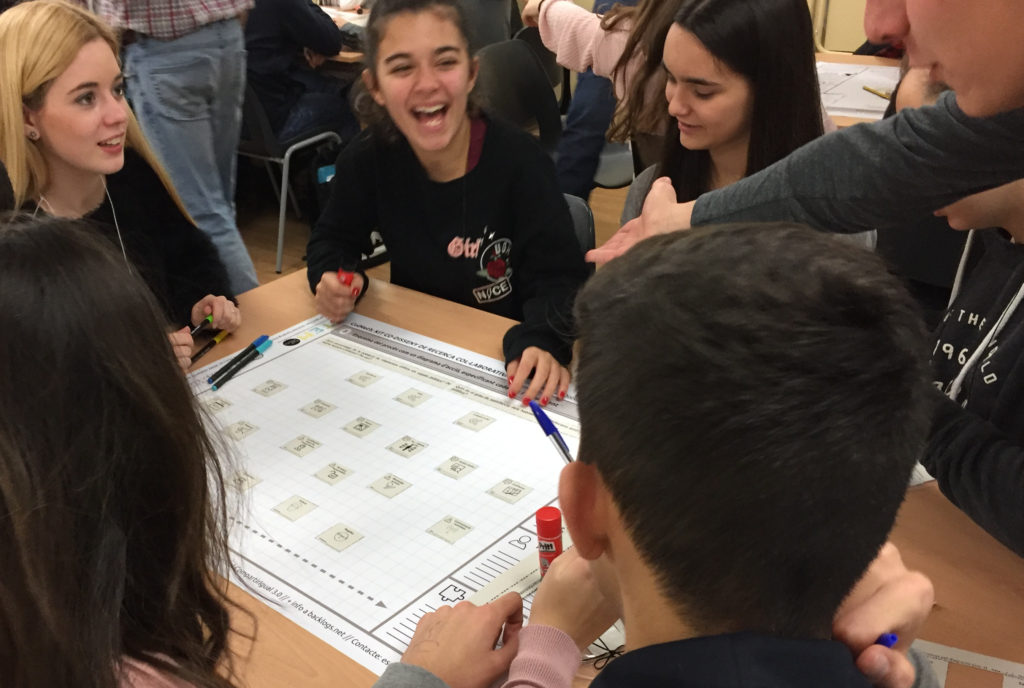
For eliciting and discussing the main logistics and needed tasks to deploy each experiment, the fourth and final session of the co-design process involved again to create smaller sub-groups in each of the three classes, which at that stage had already very different approaches to the goals and sequence of the finally selected experiments (one related to perceptions about public space and infraestructures in the city, another one related to gender and violence in a specific neighbourhood and, finally, the third experiment concept focusing on equality and racial prejudices when enrolling kids at local schools). In each case, the session tried to move from the co-design paradigm to one of preliminary planning, based on the selected prototypes and the principles of agile management. Participants, as a final stage of their research co-design, had to brainstorm and share with the rest of the group what they thought was needed at different levels in order to make the experiment possible.

In the moment of writing this, results are still partial and unconcluded, waiting for the different surveys and interviews about the co-design phase to be analysed (from my side), and for the data gathered via the different experiments that just took place in some public spaces, with the direct implication of the “amateur” participants. However, qualitative feedback and notes from participant observation so far, as well as evaluation meetings with the respective teams of teachers and scientific researchers in charge of the experiment, point to a high level of satisfaction with the predefined goals, from different perspectives. Some of the key findings can be summarised as:
- The scientific team from OpenSystems engaged regularly in the elaboration and different versions of the toolkit, as well as in the co-facilitation, and based on their feedback all results from each session helped them to figure out the type of experiment and needs related to it.
- The scientific team also have an overall positive opinion about the level of engagement and insights from participants in defining progressively the issues, questions and methods to connect to each experiment.
- Teachers from each group observed a progressive implication and quality of results defined by their respective groups of students, and compared to the previous edition of the citizen science project (with other groups) more diverse types of learning implications (related to skills, cognitive tasks, self-assessment, meaningful participation, etc).
- All groups have a high level of motivation to continue with the rest of the experiment phases, and also confidence in the practical and specific use of the outputs of this co-design phase.